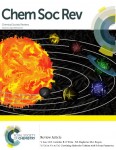More healthful foods, including new kinds of unsaturated oils, may result from mathematical models developed by a University of Guelph professor.
Prof. Michael Rogers, Department of Food Science, is lead author of the cover article of the current Chemical Society Reviews journal on why some small molecules self-assemble into gels while others do not.
The paper discusses the role of environment in the assembly of gels, which are important in drug delivery, tissue regeneration and food science.

Among potential health benefits, he said, “we can find new compounds to structure edible unsaturated oils as alternatives to saturated and trans fats. My lab is looking for phytonutrients that may assemble, eliminating the associated health risks with unhealthy fats.”
Rogers studies the underlying mechanisms of gel self-assembly, which he said are poorly understood at the moment.
“We need to look at the wider picture. The idea behind this paper is to develop predictive tools to foresee what molecules self-assemble in different environments. We can’t just rely on serendipitous discoveries to find these gels.”
This process goes on all around us, said Rogers.
“Nature has a remarkable ability to construct these supramolecular assemblies ranging from silks, mollusk shells and muscle proteins to DNA and, when it goes wrong, the development of Alzheimer plaques,” he said.
New gels can result from changing solution properties such as the polarity or shape of atoms.
“Making simple changes in polarity would affect the self-assembly process,” he said.
“This is far from simple, though, so developing these statistical models can help us understand what will take place in these gels.”
The paper notes there is not likely to be one single method of finding ways to get gels to assemble, and self-assembly “is intricate and must balance parameters.”
The paper is titled “To gel or not to gel: Correlating molecular gelation with solvent parameters.”